microscope
Latest

Researchers retrofit microscopes to take 3D images of cells in real-time
UT Southwestern Scientists have invented an optical device they claim can be retrofitted to microscopes to capture 3D images of cells.

See the 'Girl with a Pearl Earring' painting in 10-gigapixel detail
Microscope manufacturer Hirox has created a panorama of Vermeer’s famous Girl with a Pearl Earring at a mind-goggling 10-gigapixel resolution.

Scientists unveil 3D microscope that visualizes cells without damaging them
There's a problem in cell biology research: to study what happens inside a cell, it has to be destroyed. When scientists use a traditional microscope to observe a cell, they use stains -- chemicals that color parts of the cell to make them visible. However, these stains cause damage and kill the cell prematurely. This might not be a problem for long though, as scientists at the Swiss Federal Institute of Technology (EPFL) have developed a technique to look inside living cells without damaging them.
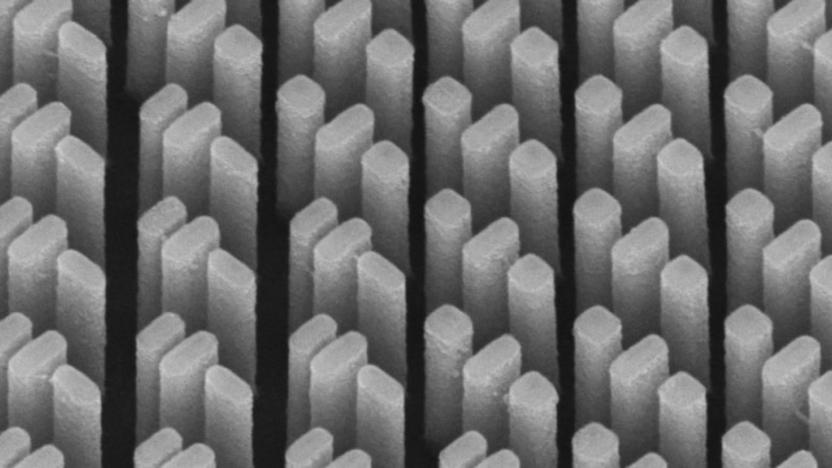
Researchers find a way to fix the purple halo effect in images
While cameras and cutting-edge microscopes have come on leaps and bounds in recent years, the optical technology these kind of products use hasn't really changed since the mid-1700s. Even the highest spec gear relies on compound lenses, which were invented around 1730. Their main function is to bring together different wavelengths of light that otherwise focus in different spots. This corrects what's called "chromatic aberrations," or in other words, the purple halo that appears in images when the wavelengths are focused at different points. The problem is, these lenses are bulky, expensive and not as effective as they could be. But researchers at Harvard have found a solution with its newly-developed "metacorrector".

Advanced microscope shows cells at work in incredible 3D detail
For the first time, scientists have peered into living cells and created videos showing how they function with unprecedented 3D detail. Using a special microscope and new lighting techniques, a team from Harvard and the Howard Hughes Medical Institute captured zebrafish immune cell interactions with unheard-of 3D detail and resolution. The tech has already yielded new insights on cell function and could transform our understanding of how organisms function at the smallest scales.

Google made an AR microscope that can help detect cancer
In a talk given today at the American Association for Cancer Research's annual meeting, Google researchers described a prototype of an augmented reality microscope that could be used to help physicians diagnose patients. When pathologists are analyzing biological tissue to see if there are signs of cancer -- and if so, how much and what kind -- the process can be quite time-consuming. And it's a practice that Google thinks could benefit from deep learning tools. But in many places, adopting AI technology isn't feasible. The company, however, believes this microscope could allow groups with limited funds, such as small labs and clinics, or developing countries to benefit from these tools in a simple, easy-to-use manner. Google says the scope could "possibly help accelerate and democratize the adoption of deep learning tools for pathologists around the world."
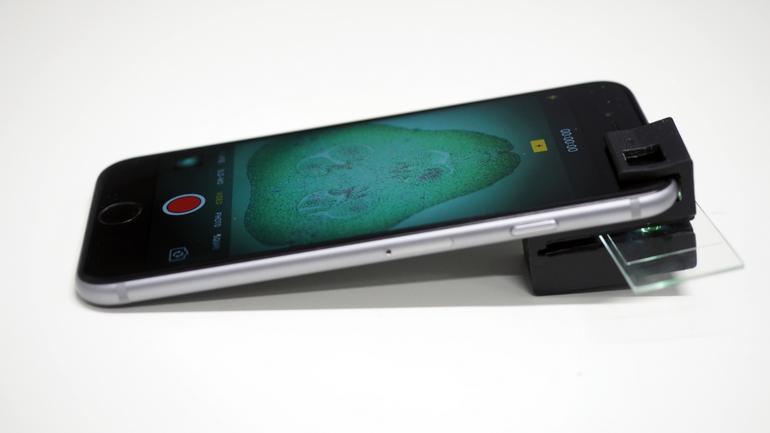
3D-printed smartphone microscope is good enough for scientists
Your smartphone could soon be a fully functional microscope capable of examining samples as small as 1/200th of a millimeter. Australian researchers have developed a clip-on device that requires no external light or power sources to produce a clear picture of microscopic organisms and cells from animals, plants and blood -- and it can be made by anyone with a 3D printer, as the team is sharing the 3D printing files publicly.
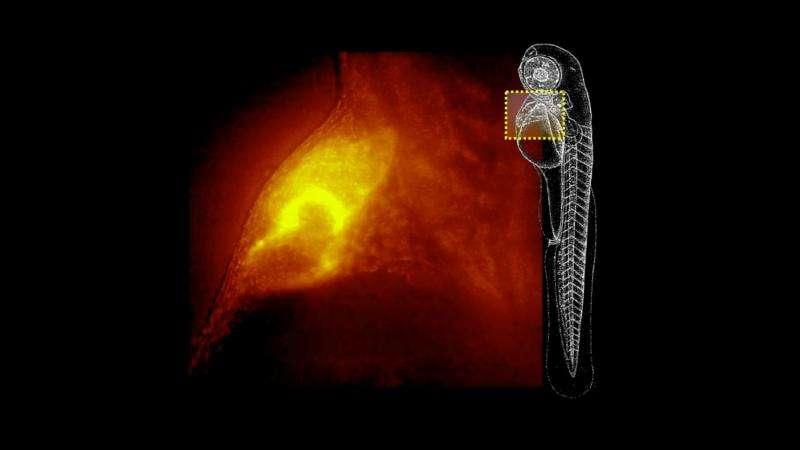
A new microscope can quickly generate 3D images of living organisms
A new microscope created by researchers at Universidad Carlos III de Madrid has the ability to take fast 3D images, making it easier to observe cells in living animals over time. For example, Jorge Ripoll, one of the researchers on the project and co-founder of the company set to produce the scope -- 4D Nature -- said in a statement, "We can see how the heart of a zebrafish beats and make a 3D- reconstruction of its beat."

Sperm microscope may help nanobots navigate human bodies
Scientists have developed a microscope that allows them to track sperm movements in 3D, which could benefit the understanding of both fertility treatment and micro-robotics. The device is made up of inexpensive components including LEDs and an image sensor -- like the one found in a mobile phone -- and uses holography and image reconstruction algorithms to precisely track the motion of sperm heads and tails.

Flat microscope for the brain could help restore lost eyesight
You'd probably prefer that doctors restore lost sight or hearing by directly repairing your eyes and ears, but Rice University is one step closer to the next best thing: transmitting info directly to your brain. It's developing a flat microscope (the creatively titled FlatScope) that sits on your brain to both monitor and trigger neurons modified to be fluorescent when active. It should not only capture much more detail than existing brain probes (the team is hoping to see "a million" neurons), but reach levels deep enough that it should shed light on how the mind processes sensory input. And that, in turn, opens the door to controlling sensory input.
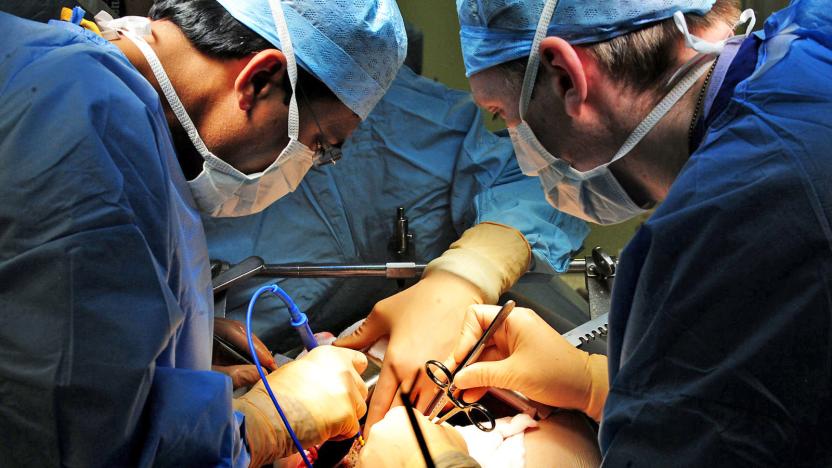
Microscope advances could prevent multiple breast cancer surgeries
A new type of microscope could drastically reduce the number of women having multiple breast cancer surgeries, researchers at the University of Washington claim. Until now, there's been no reliable way to determine whether surgeons have completely removed all cancerous tissue during surgery, meaning between 20 and 40 percent of women have to undergo second, third or even fourth procedures.

Verily's wearable microscope sees beneath your skin
UCLA and Verily, Google Alphabet's life sciences division, has developed a wearable microscope that could help doctors in the near future. The device is designed to track fluorescent biomarkers inside the skin, a vital tool used to detect certain cancers and to monitor the delivery of drugs inside a person's body. These biomarkers are, essentially, glow-in-the-dark dyes that medical professionals can follow as they journey around your veins.
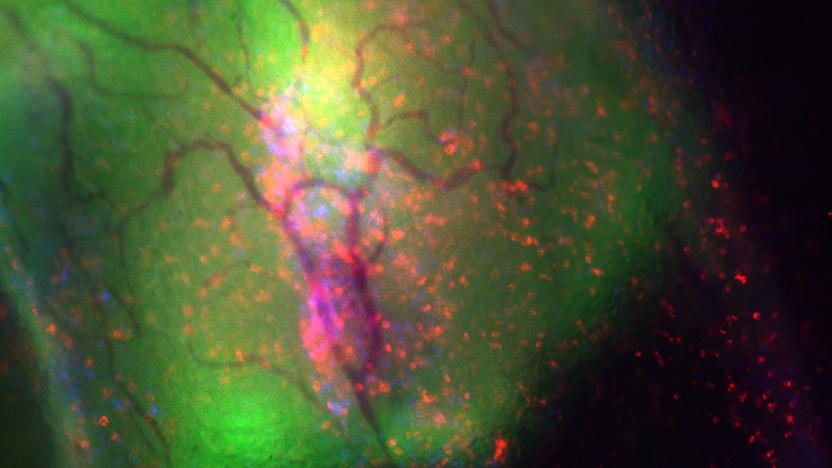
Scientists watch an immune system fight the flu in real time
To date, biologists have typically had to study the progress of a virus through indirect means, such as studying the antibodies -- actually tracking the viruses themselves has been difficult. However, researchers say they've found a way to follow the progress of a virus in real time. By using multiphoton microscopy in tandem with a laser and fluorescence, the team monitored influenza virus in a mouse's trachea (where the transluency made imaging possible) through the infection and immune system response.
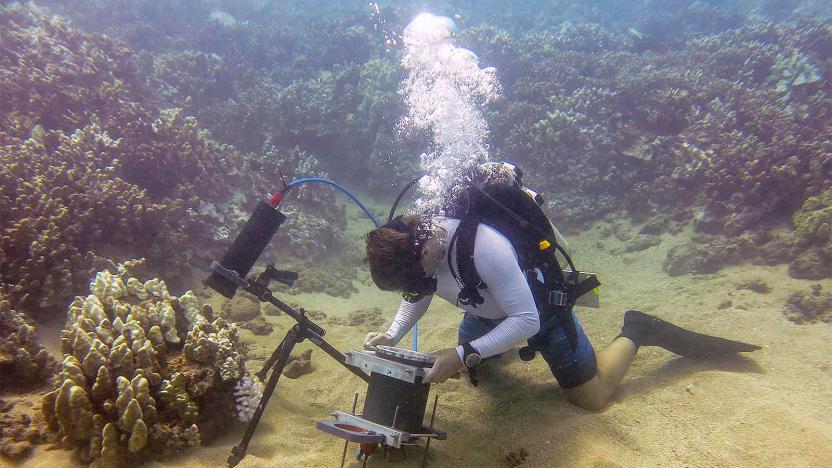
Underwater microscope offers a brand new look at sea life
Scientists have a hard time studying microscope sea life, and for good reason. Underwater scientific equipment can't study things at that scale, and bringing samples up to the surface frequently deprives them of that all-important natural context. Enter UC San Diego: its researchers have crafted the Benthic Underwater Microscope, the first undersea microscope that can study "millimeter-scale" activity in its native habitat. It combines a water-friendly computer with an imaging system that revolves around both a high magnification lens and a flexible, tunable lens that can see shapes in 3D. Combined with an LED ring light and fluorescence imaging, the system shouldn't be daunted by most water conditions or unusual specimens.

A rare fossil makes an appearance at the Natural History Museum
A nine-year-old girl patiently looked on while a technician pulled up a scan of her specimen. A 3D skull with a pointy beak popped up on the computer screen. The child, wearing clear-framed glasses and a light gray tee with a sequined star on the front, walked up to her father, who carefully put away the skull of a duck inside a round plastic container. They had found the tiny head on a beach and had decided to bring it in for Identification Day at the American Museum of Natural History in New York.

How a novel class of microscopes has changed science
The laws of physics are simple. There's a hard 500 nanometer limit on the size of objects that you can see through a conventional, optical microscope because that's the "diffraction limit" of a wavelength of visible light. Anything smaller than 500nm looks fuzzy and out of focus because it is simply too small for the optics to properly focus on. Basically diffraction limits exist because the light that bounces off the object and into your eyeballs is larger than the thing you're looking at. The problem is magnified when there are multiple sub-500 nm items in your field of view because their "fuzziness" overlaps and further obscures the view. But that's where super-resolution fluorescence microscopy comes in.
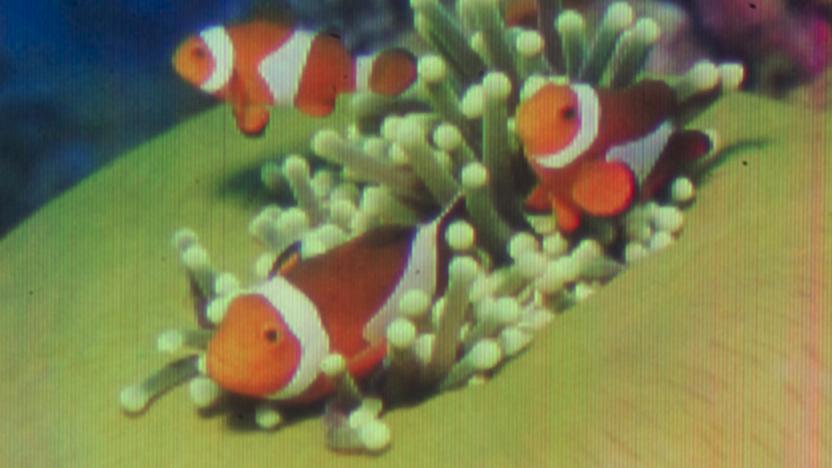
Tiny microscope lets you see the smallest-ever inkjet prints
No, that's not an up-close look at a monitor. That's the world's tiniest color inkjet image made large, and you may not need it blown up to see it in the future -- if you're willing to lay down some cash. In a hybrid of scientific discovery and publicity stunt, Scrona and ETH Zurich have used nano-sized quantum dots to print a clown fish picture measuring just 0.000014 square inches across, setting a Guinness World Record for the smallest color inkjet image to date. You need a good microscope just to see it, in fact... and conveniently, Scrona is working on just that.

ICYMI: Theater headset, robot plumbing snake and more
#fivemin-widget-blogsmith-image-124413{display:none;} .cke_show_borders #fivemin-widget-blogsmith-image-124413, #postcontentcontainer #fivemin-widget-blogsmith-image-124413{width:570px;display:block;}try{document.getElementById("fivemin-widget-blogsmith-image-124413").style.display="none";}catch(e){}Today on In Case You Missed It: A new visor headset that can be worn on the go yet replicate watching your favorite show in a movie theater is out for about $700. The only downside: Looking like you don't know how to wear headphones. MIT has a new microscope to show chemical processes in real-time video, on an atomic scale. Meanwhile your resident plumbing expert will want to know about the new laser-wielding robot snake from OC Robotics.

Microscope can scan chemical processes in real-time
Atomic force microscopes are the tool of choice to see the tiniest atomic structures, right down to hydrogen bonds. The drawback with current models is that they're too slow to create anything but static images, making them useless for processes like chemical reactions. However, MIT researchers have created a prototype model that's 2,000 times faster than any commercial product, making it feasible for video (below). "People can see, for example, condensation, nucleation, dissolution or deposition of material in real-time -- things [they've] never seen before," says MIT professor Kamal Youcef-Toumi.

ICYMI: The Kellogg box prize, a suped-up SUV and more
#fivemin-widget-blogsmith-image-757254{display:none;} .cke_show_borders #fivemin-widget-blogsmith-image-757254, #postcontentcontainer #fivemin-widget-blogsmith-image-757254{width:570px;display:block;} try{document.getElementById("fivemin-widget-blogsmith-image-757254").style.display="none";}catch(e){}Today on In Case You Missed It: We know guys. You already lost precious time catching up with all the Apple news. That's why we're covering a virtual reality experience from Kellogg, which is sending out cereal boxes with instructions for making a VR headset out of them. In other paper-folding news, the cheapest ever foldable microscope (only 50 cents!) traveled to the Amazon rainforest and the pictures are gorgeous. And Range Rover is protecting its wealthiest patrons with an SUV that can take TNT blasts, armor-piercing gunshot rounds and other such spy-level shenanigans.









